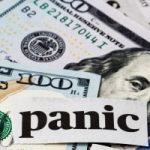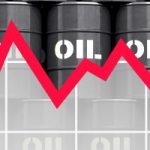Can Joe Biden win the presidency?
In our previous article, we looked at Donald Trump’s history as the 45th president of the United States, focusing on the financial aspects of his tenure, the roadblock he hit in the form of the COVID-19 epidemic and his financial plans for the future should he win re-election.
But today we want to focus on the other side of the equation – Trump’s opponent and the Democratic party’s candidate, Joe Biden.
Biden has not held any kind of official office in nearly 4 years, so we can’t really discuss his past economic performance. Instead, we will focus on a couple of other items that may occupy his financial agenda in the coming months and possibly years.
- His financial path to victory – how he can use the economy to defeat Trump in the upcoming elections.
- What comes next? – How he can set his financial agenda, and what may be its focus.
And to be perfectly honest the COVID-19 pandemic, the chaos it has brought about and, yes, even the unimaginable toll in lives taken has provided Biden, at least on the economic front, an ostensibly perfect path to victory.
The Path To Victory For Biden
No matter what your political affiliation is or financial situation in life, the impact that the ongoing pandemic has had on the US economy (and the global one, at that) is categorically undeniable:

● the Dow JonesA business and financial news & analysis company that publishes the Dow Jones 30 index, which tracks... fell from great heights in March of this year and, while it is inching back up, it has yet to recover fully.
● Employment numbers also crashed in March and April as the marketA location or entity where people and entities can negotiate and trade assets of value. went into lockdown mode, and while they too are showing some signs of improvement, employment numbers remain grim.
● The auto industry, which has historically been one of the staples of America’s industrial society, is in the midst of a severe crisis brought about by the lack of Japanese part exports and rising costs.
● Oil prices remain $20 lower when compared to the already low prices at the end of 2019, and the outlook is equally as grim for many of the US major export partners.
When combined with public health issues, an ever-expanding housing crisis and multiple other day-to-day issues, Biden’s victory, in theory, does not really necessitate the creation and display of actual financial plans at this pointThe unit of price change for bonds (1%), futures (0.01%), shares ($1) and mortgage fees (1% of the p.... Sure – he could come up with plans and use those as centrepieces of his campaign; but he could spend his entire campaign simply pointing out all the ways the Trump administration has failed the American economy and its people.
It really could be that easy. Trump will likely do his level best to point out all the ways he improved the US economy in his first 3 years in office (those not marred by a pandemic) and all Biden has to counter is to point out the utter collapse in 2020 (assuming nothing changes in a major way between now and November 3rd) and the lack of response from the Trump administration to stem the tide while the collapse was still forming.
However, it could also be argued that most economic improvements were left-overs from the hated Obama administration and that the whole of 2018-2019 was already marred by Trump’s trade wars with the rest of the world; any improvements in equity benchmarks, it could also be said, do not reflect any economic improvement but rather the President’s ongoing war with the Federal Reserve to provide cheap money to bolster markets – justified or not.

There are obviously many other factors at play during this election, but from a financial standpoint, there seems to be a pretty clear-cut plan of action for both candidates, Biden more so than Trump.
And If Biden Becomes the Next US President?
There is probably a very good reason for the saying “It takes but a second to destroy what has taken a lifetime to build”. No matter who wins the upcoming election, they will be faced with a Herculean task – restoring the American economy.
In our previous article, we went into detail about how Donald Trump may go about achieving that goal, so it’s now time to see how Joe Biden would attempt to do the same if elected.
Oddly enough, the Biden path to financial recovery likely originates from the same source as that of Trump, but with vastly different ways of going about things.
Grand national projects, in the vein of the “New Deal”, would be the “easiest” path to aid recovery – employing millions of people in government-sponsored projects covering anything from road building to the high-tech industries. These would resolve a few issues in a relatively short span:
● Unemployment would drop.
● Industries would regain strength.
● Spending would increase.
● The dollar would rise in worth.
● Other benefits would likely be gained.

Granted, the only way to pull off such massive projects would be to cut into the national deficitA trade balance that is negative as a result of cost (imports, on the national level) being greater .... But, unlike Trump, who seems rather unconcerned with that (and is also less likely to enact such grand plans) Biden seems to have a plan on combating that rise in deficit by repealing many of the tax breaks given by the Trump administration to large corporations and extremely wealthy individuals. Those repeals will only resolve some of the cost issues. But, if all that is required is a “restart” of the economy, it seems reasonable to assume that, once the ship is righted, the economy should resume steamrolling forward, which will – in turn – help cut the deficit back down to size.
The economy has always been cyclical – no reason for it to stop now, is there?
While handling the recovery from the pandemic, Biden has also promised to concentrate on other major “projects” that may have a deep impact on the country’s economy – improving Medicare and Medicaid, possibly going as far as trying to establish a universal healthcare system; there’s also the matter of student loan debts and other impactful issues.
It’s unclear how many of these action items Biden can get to while he is in office (if elected), but the impression given so far is that should the election swing all the way blue, Democrats gaining full control over both houses – thus avoiding the Obama era stalemate – the Democratic contender intends to swing for the fences.
In our next article we will look at a possible scenario in which there’s no clear winner in the days and weeks following the election on November 3rd, either due to mail-in ballots or due to various legal issues (as the case was in 2000), and the impact such an event could have on the US economy.











